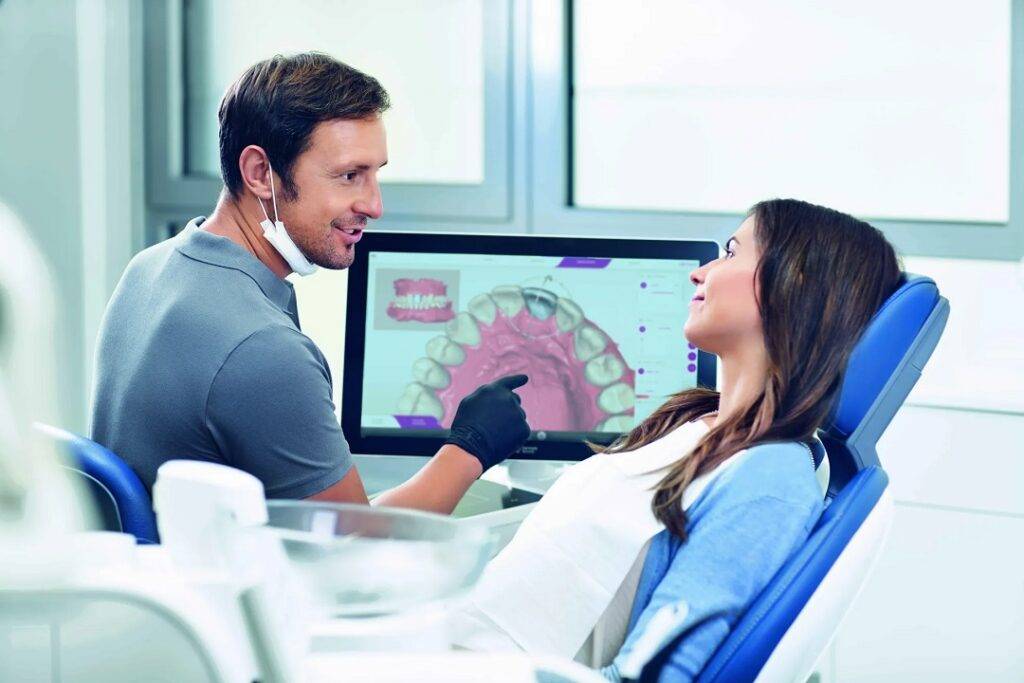The landscape of orthodontics has dramatically changed over the past few years, particularly with the advent of clear aligner treatment. No longer confined to traditional metal braces, patients now have access to a more aesthetically pleasing and comfortable alternative.
At the heart of this revolution lies advanced technology, which enhances every aspect of clear aligner treatment—from diagnosis to treatment planning, manufacturing, and patient engagement. In this blog, we will explore how technology is transforming the clear aligner experience for both patients and orthodontists.
3D Imaging and Scanning Technology
One of the most significant advancements in clear aligner treatment is the use of 3D imaging and scanning technology. Traditional impressions can be uncomfortable and time-consuming.
However, digital scanners create precise, three-dimensional images of a patient’s teeth and gums in a matter of minutes. This technology provides orthodontists with a detailed view of the patient’s oral structure, enabling accurate treatment planning and custom aligner fabrication.
Benefits of 3D Imaging:
Accuracy: 3D scans are more precise than traditional molds, ensuring a better fit for the aligners.
Efficiency: Digital impressions save time during appointments, allowing for a quicker start to treatment.
Computer-Aided Design (CAD) and Manufacturing
Once the 3D scans are obtained, computer-aided design (CAD) software allows orthodontists to create a customized treatment plan tailored to the patient’s specific needs. This technology not only simplifies the planning process but also enhances the accuracy of aligner fabrication.
Advantages of CAD:
Customized Treatment Plans: CAD software allows for the simulation of tooth movement, enabling orthodontists to visualize the entire treatment process before starting.
Speed of Production: Aligners can be manufactured quickly and efficiently using advanced 3D printing technology, reducing the waiting time for patients.
Smart Technology Integration
The integration of smart technology into clear aligner treatment is also reshaping patient experiences. Smart aligners can come equipped with features like built-in sensors that monitor the patient’s progress and adherence to the treatment plan.
Smart Features:
Tracking Progress: Some aligners can connect to mobile apps, allowing patients to track their progress in real time.
Reminders: Patients can receive reminders to wear their aligners or take them out for meals, enhancing compliance.
Telehealth and Remote Monitoring
The rise of telehealth has made it possible for orthodontists to monitor patients remotely, providing a level of convenience previously unseen in orthodontic care. Remote monitoring tools enable orthodontists to assess a patient’s progress through photos or video consultations without the need for frequent in-office visits.
Benefits of Telehealth:
Convenience: Patients can receive professional advice from the comfort of their homes, reducing the time and effort involved in commuting for appointments.
Increased Access to Care: Telehealth can also make orthodontic treatment more accessible to patients in rural or underserved areas.
Artificial Intelligence (AI) in Treatment Planning
AI technology is making waves in orthodontics by analyzing vast amounts of data to predict treatment outcomes more accurately. Machine learning algorithms can assess previous treatment cases to help orthodontists make better decisions regarding a patient’s aligner journey.
Impacts of AI:
Enhanced Predictability: AI can help identify potential complications before they arise, allowing orthodontists to adjust treatment plans proactively.
Data-Driven Decisions: With AI, orthodontists can leverage data to optimize treatment strategies, improving efficiency and outcomes.
Patient Engagement and Education
Technology is also improving patient engagement and education throughout the treatment process. Many clear aligner providers offer user-friendly apps that allow patients to access educational resources, track their progress, and communicate with their orthodontist.
Enhancing Patient Experience:
Education: Patients can learn more about their treatment options, how to care for their aligners, and the importance of adherence to achieve the best results.
Support: Having direct communication channels with their orthodontist enhances patient satisfaction and encourages better compliance.
The integration of technology into clear aligner treatment has transformed the orthodontic landscape, making it more efficient, accessible, and patient-friendly.
From 3D imaging and CAD systems to smart technology and telehealth, these advancements have revolutionized the way orthodontists plan and execute treatments, ultimately improving patient outcomes.
As technology continues to evolve, it will undoubtedly lead to even more innovative solutions in orthodontics, ensuring that achieving a straight, beautiful smile is easier and more effective than ever before.
At ODONTO, we embrace these technological advancements to provide our patients with the best possible care on their journey to a healthier, more confident smile.


